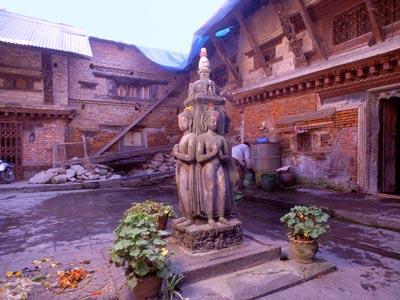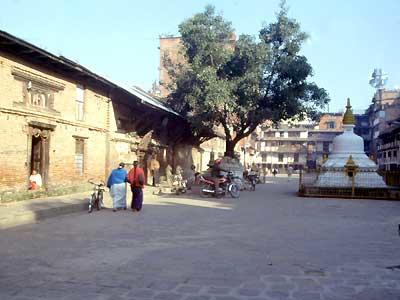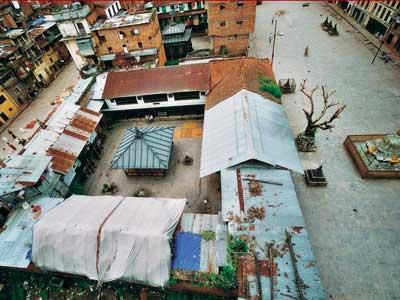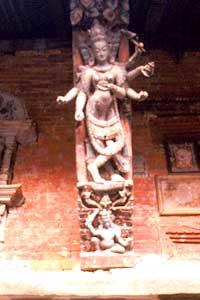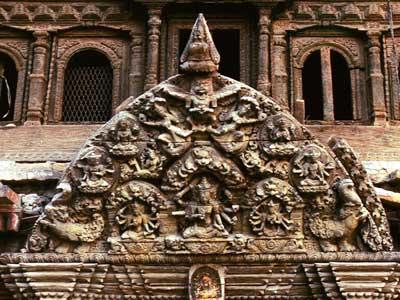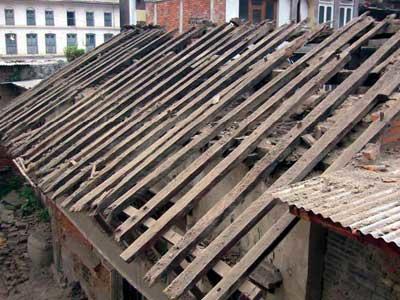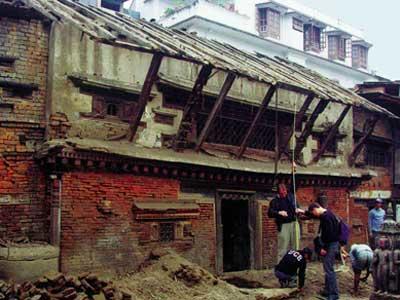Kathmandu Valley, a fertile bowl nestled among peaks of the Himalayan mountain range, has been a base of religious activity for centuries. The valley’s name points to this tradition; Kathmandu is derived from Kastha Mandap, which means “wooden temple” in Sanskrit. The Itum Baha monastery was one of the first buildings constructed in the area, its foundations thought to date from the Licchavi Period (300–879). Itum Baha is one of 83 remaining Buddhist monasteries in Nepal, but one of the few that is intact. The temple’s two-story complex is built around a central courtyard that contains several wooden figures, including a spectacular four-faced, six-armed deity from the 17th century known locally as Mahapratisara. The original wood of the columns, windows, and doors lining the courtyard is intricately carved with religious imagery. Itum Baha is still owned and operated by the sangha, a group of Newar Buddhist monastic elders.
2000 and 2002 World Monuments Watch
Itum Baha had been damaged by earthquakes and no money could be found to repair the collapsing roof. WMF placed the monastery on the Watch in 2000 and 2002. WMF provided technical expertise as well as financial aid to the Kathmandu Valley Preservation Trust (KVPT), which spearheaded the preservation of the monastery with support from the sangha. The collapsing timbers were temporarily stabilized to avoid further damage. During reconstruction of the roof, the construction techniques were adjusted in order to increase the strength of the building. This was particularly important because Itum Baha rests in a seismic area that is also often visited by violent monsoons. The shrine occupying one end of the central courtyard was restored. Mud plaster was reapplied to the walls and traditional square terra-cotta tiles were placed on the floors. The project was completed in late 2007.
The Itum Baha monastery is one of the largest and most significant examples of 13th-century Nepalese architecture. Of the five principal monasteries in the Kathmandu Valley, Itum Baha is one of three that retains its original layout. In the late 20th century, a number of factors jeopardized the monastic lifestyle at the temple complex. Urbanization and population growth threatened to overwhelm the building, which had no legal protection from development because it was privately owned and not a World Heritage Site at the time. Nepal’s community trusts for the care of monuments had been nationalized in 1962 but did not supply adequate support. The Itum Baha project brought international attention to the region, helping focus the government on preservation and increasing conservation efforts in Kathmandu and Nepal as a whole.

